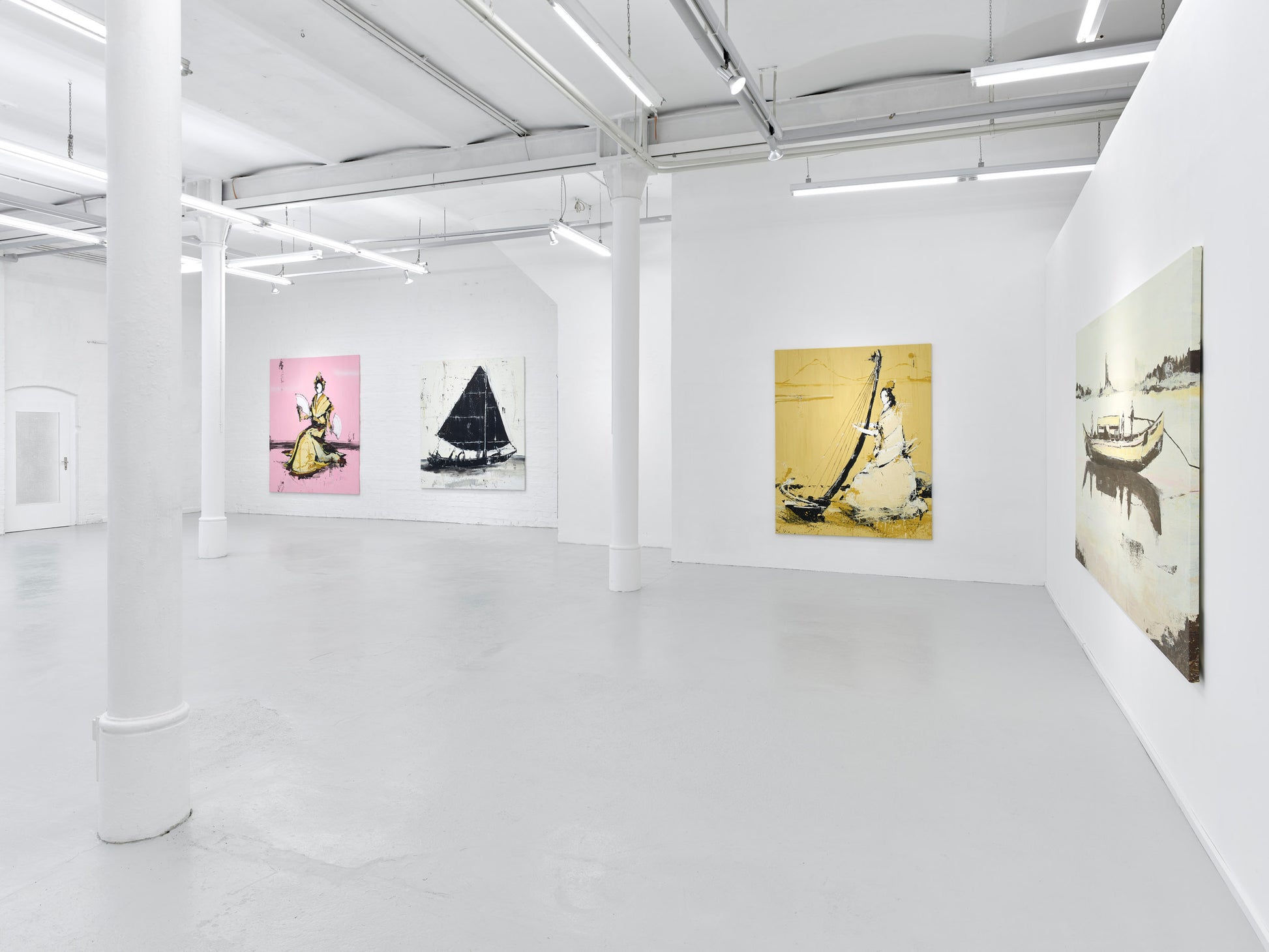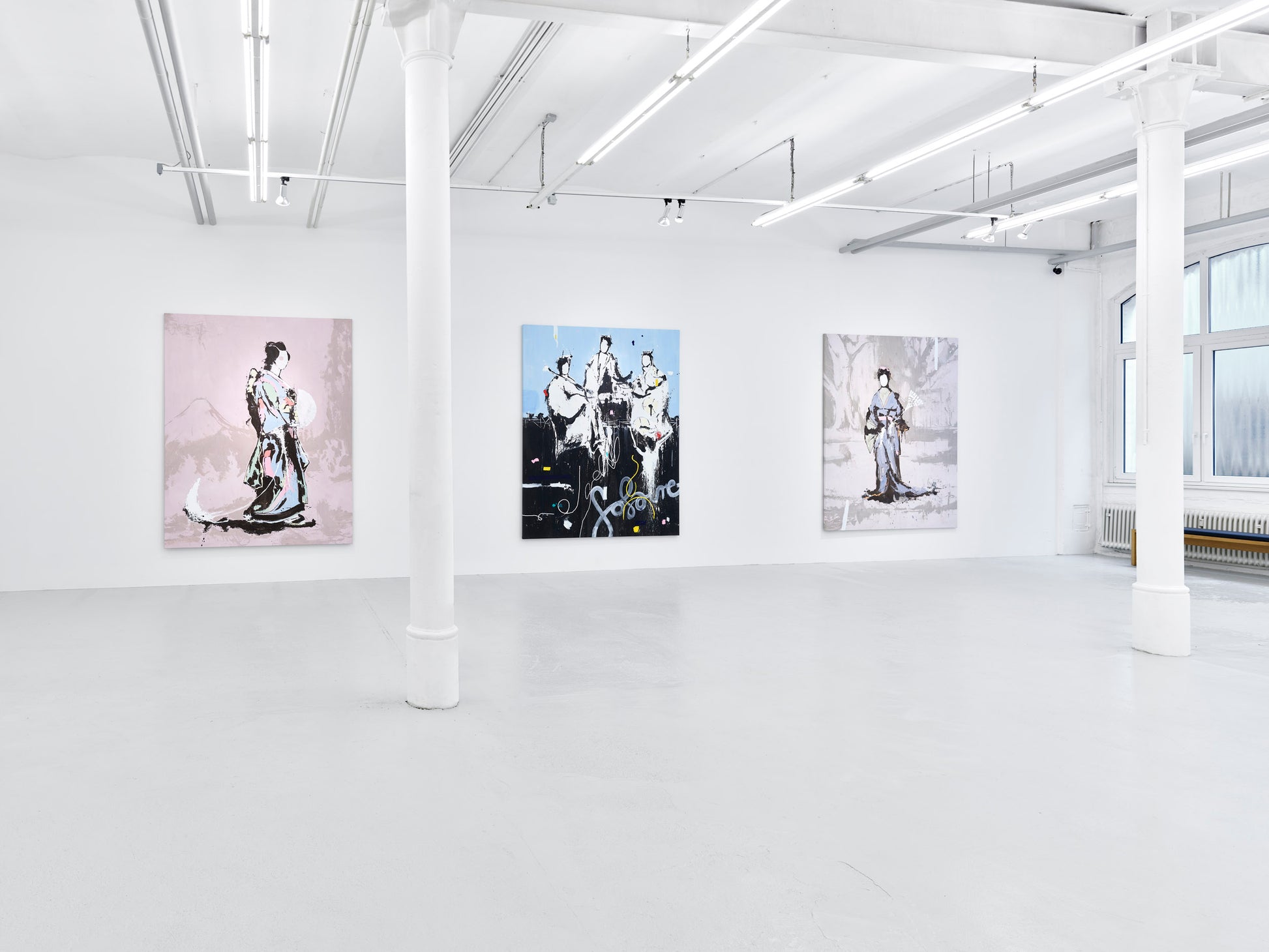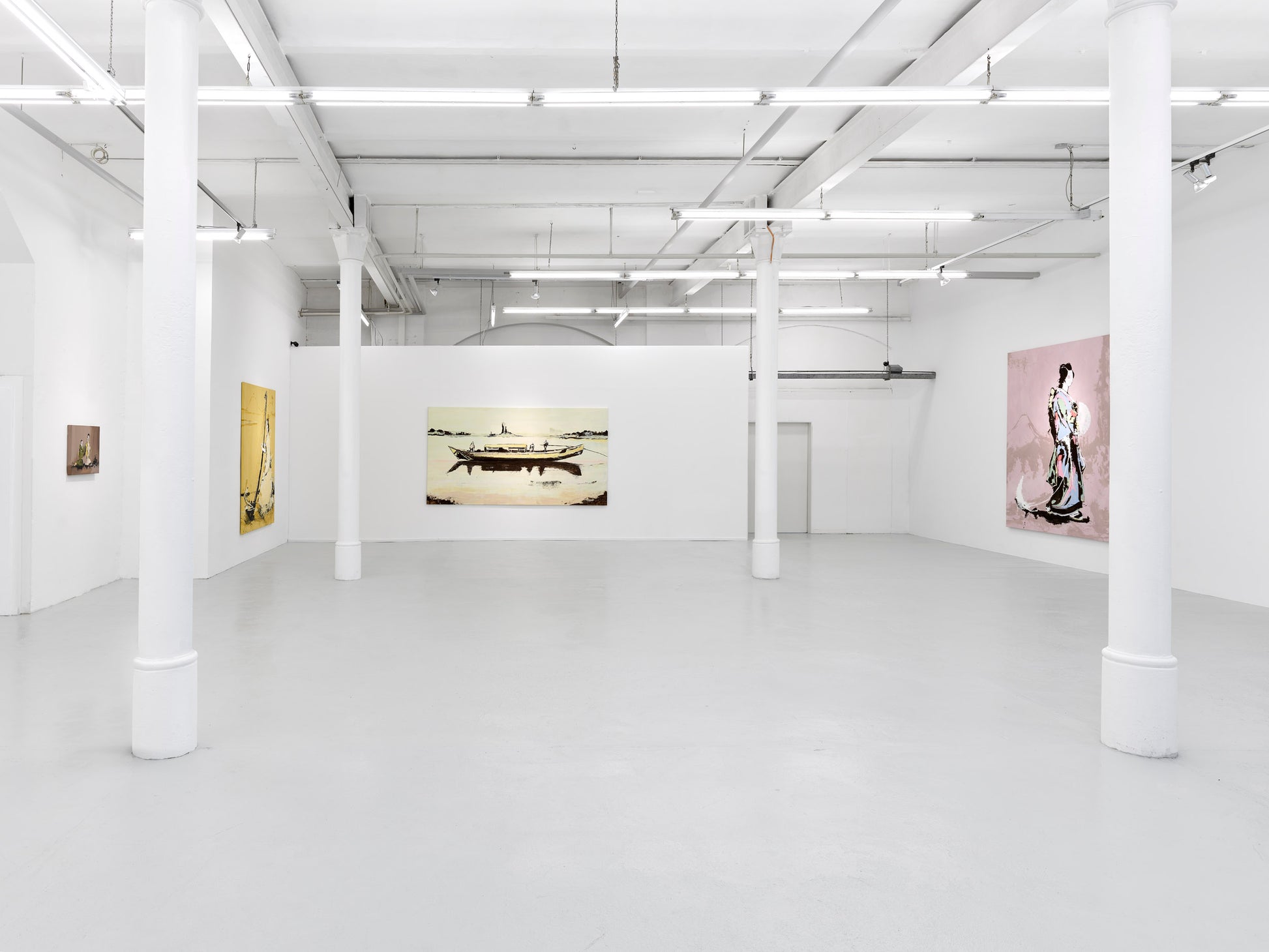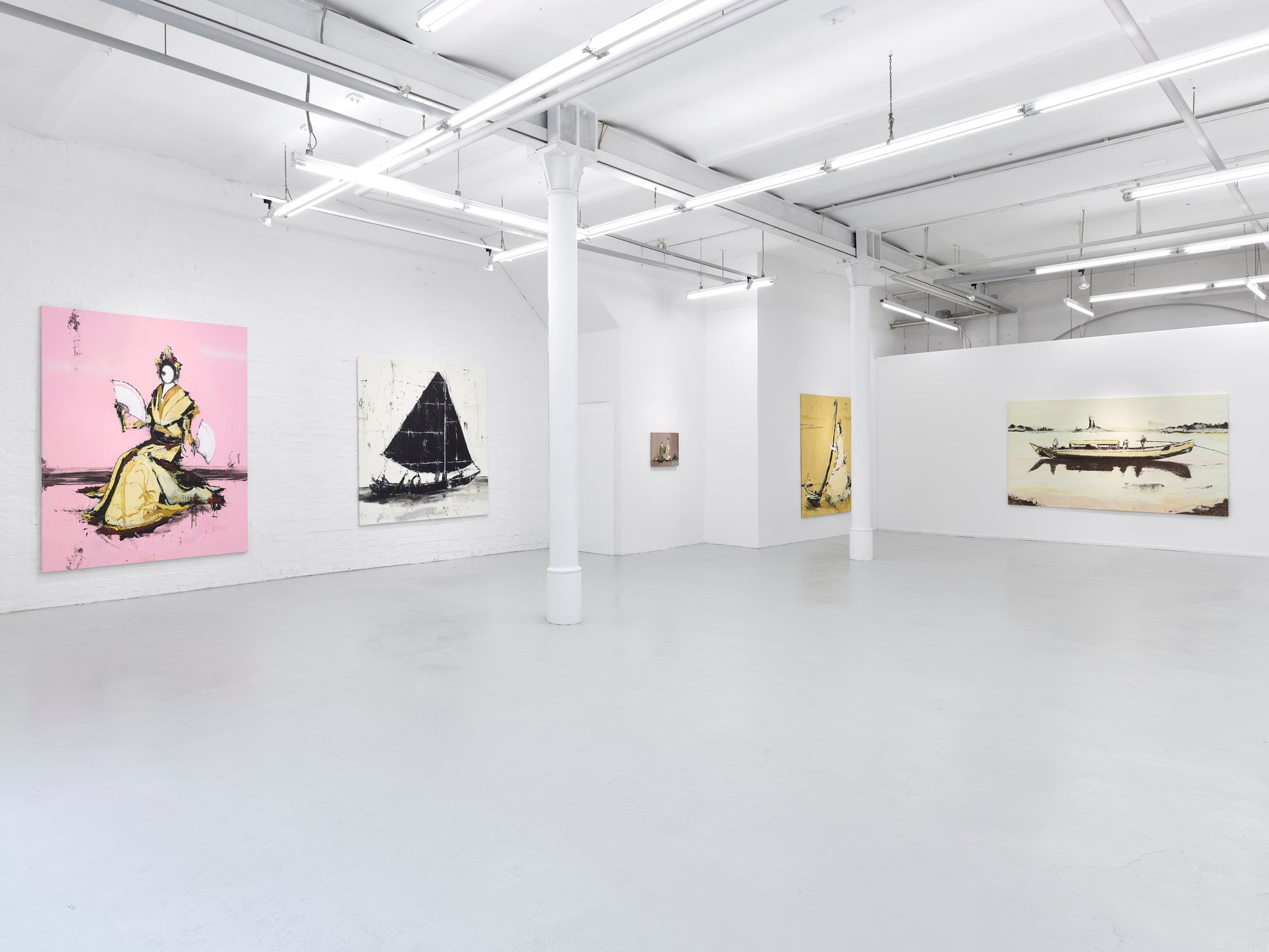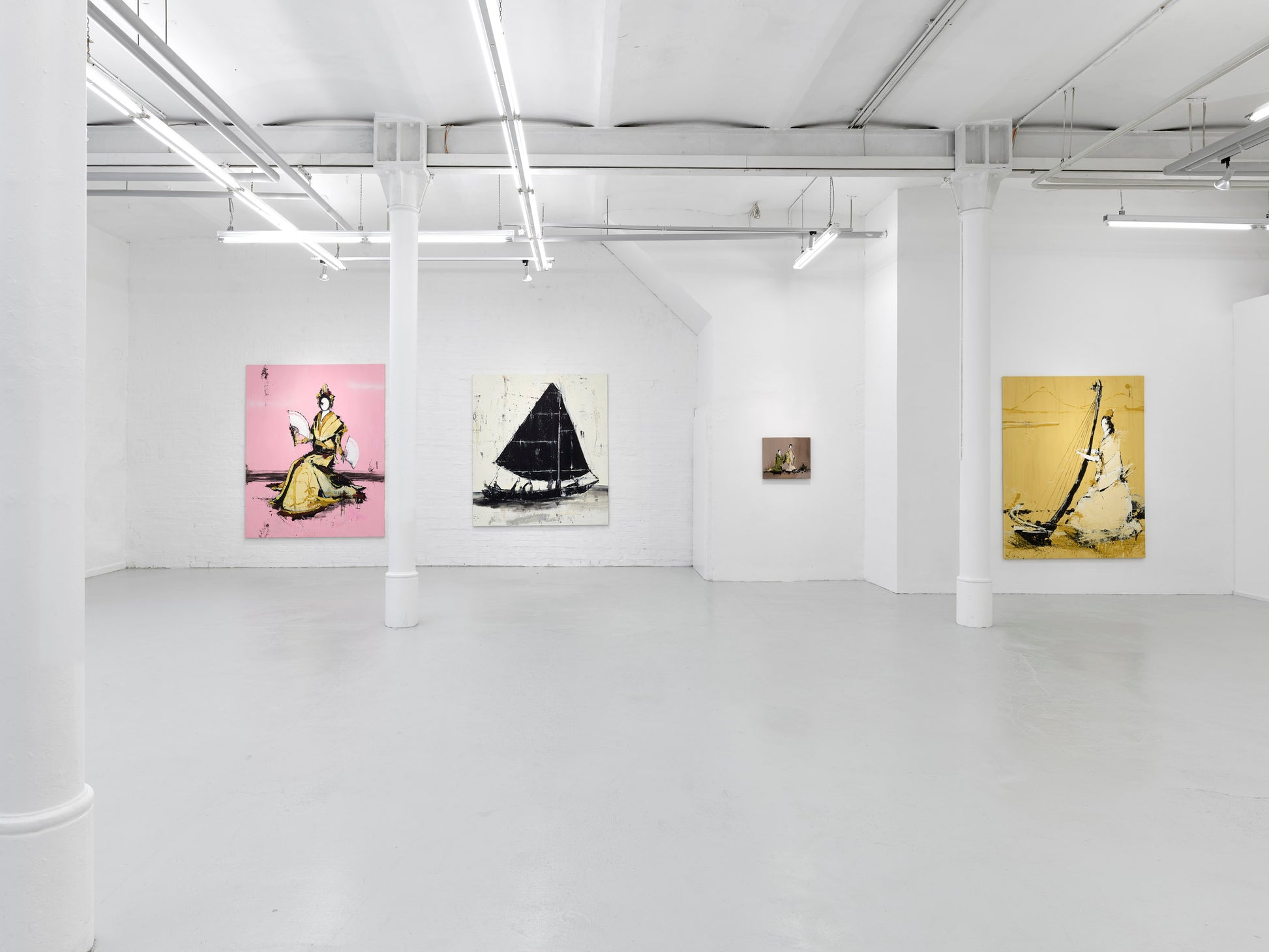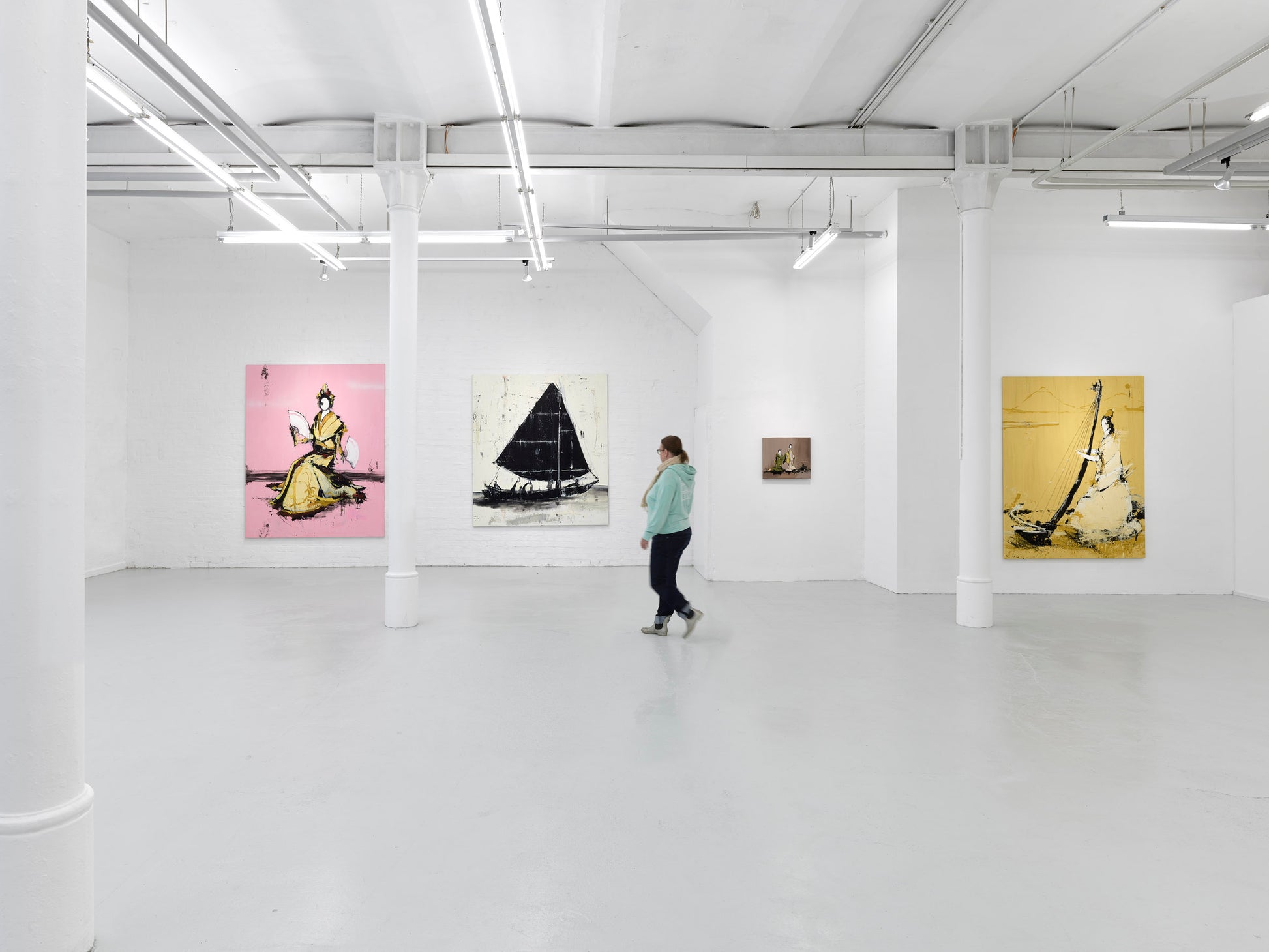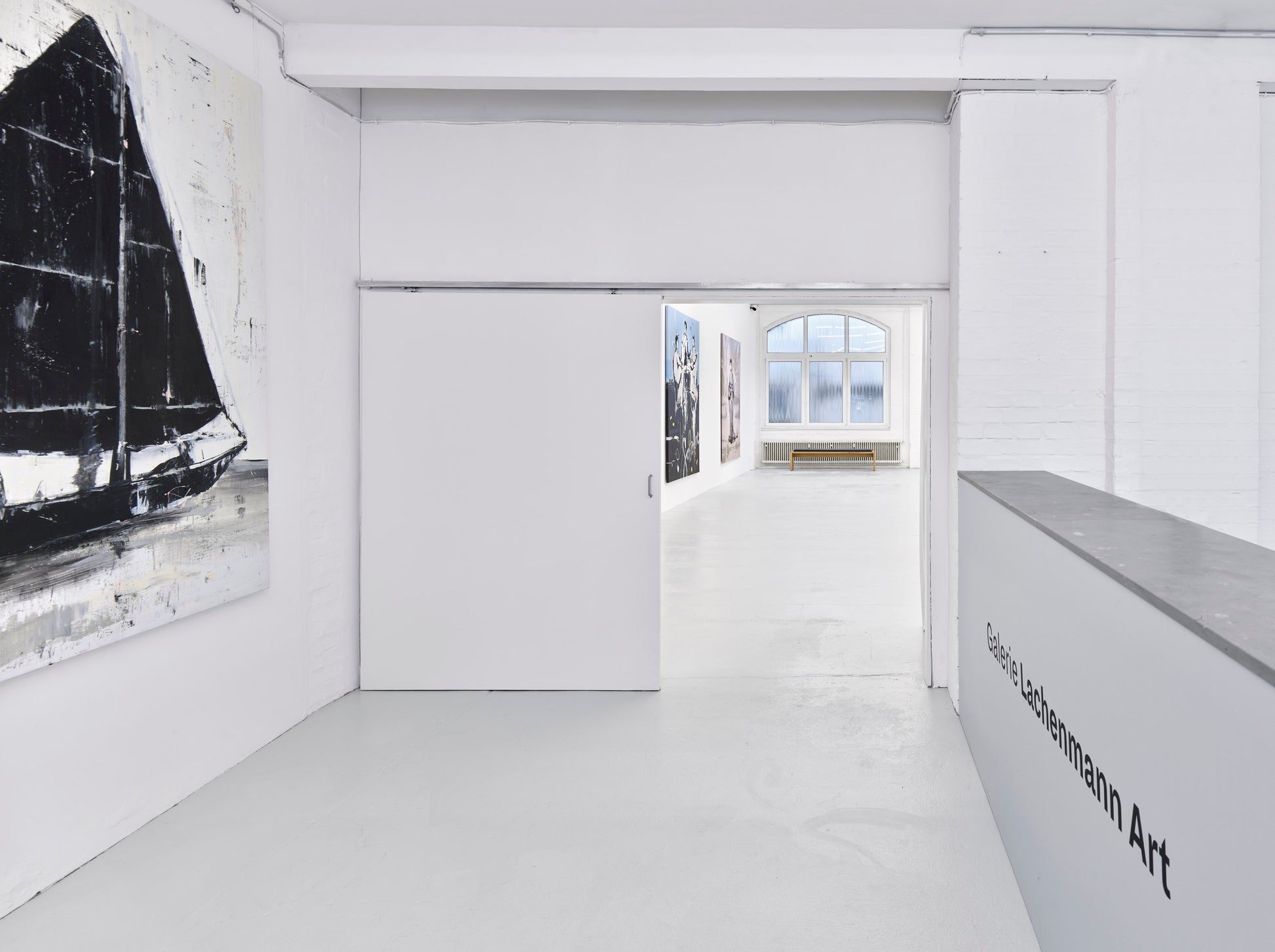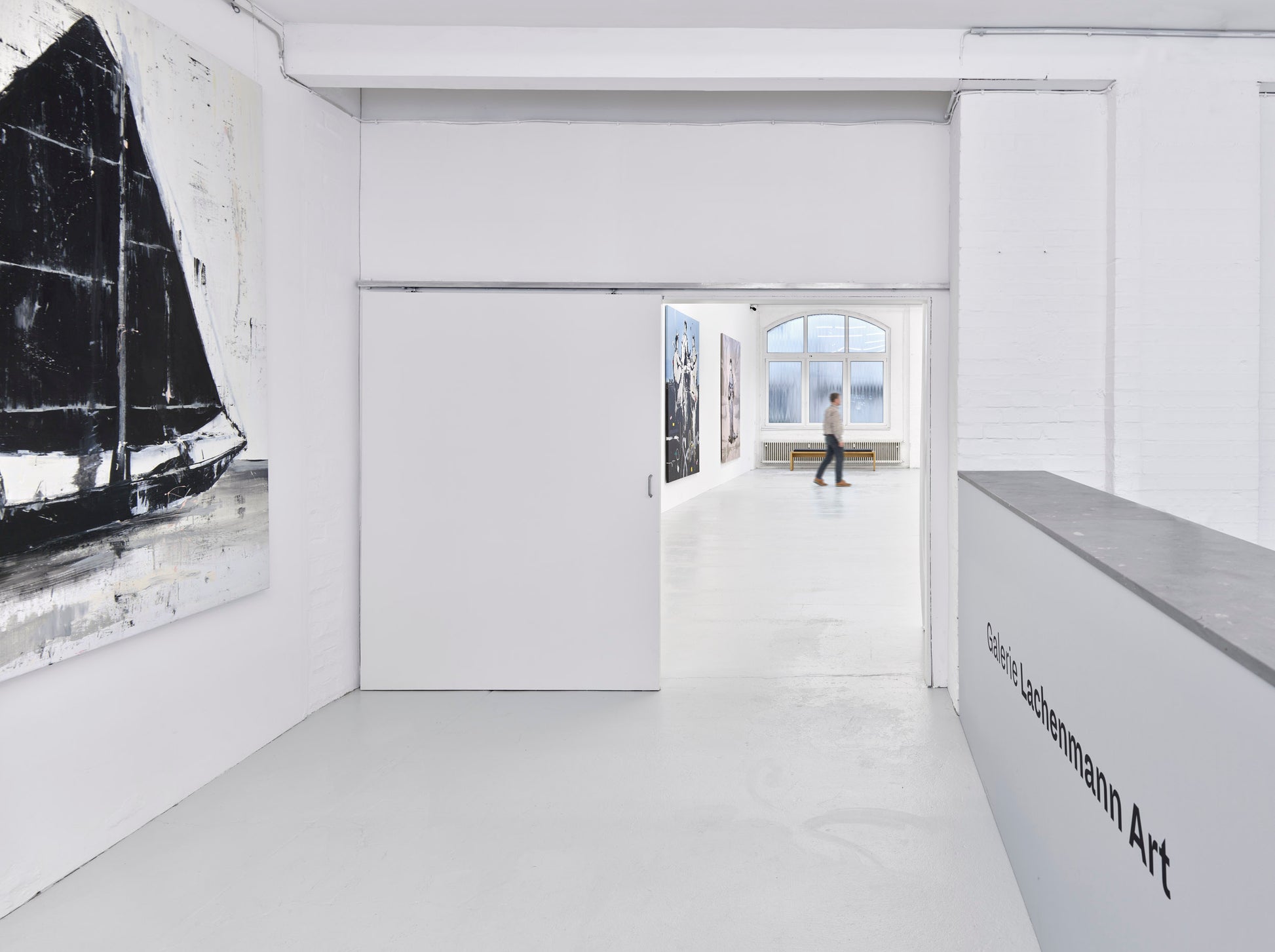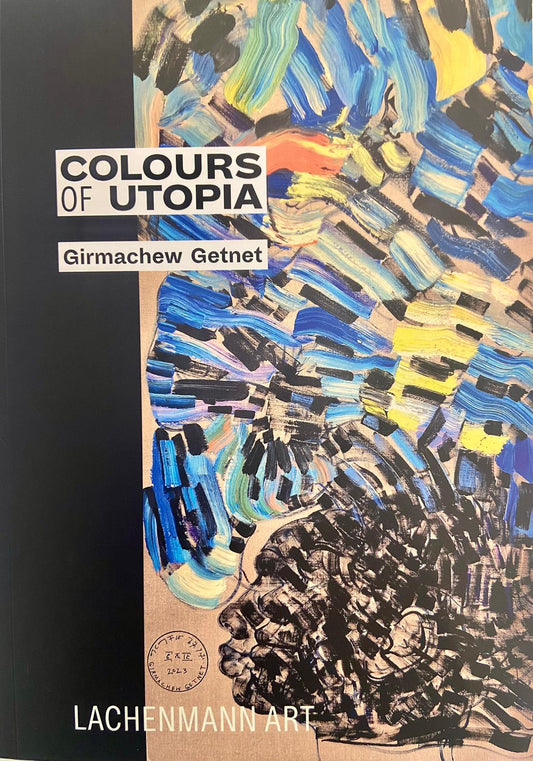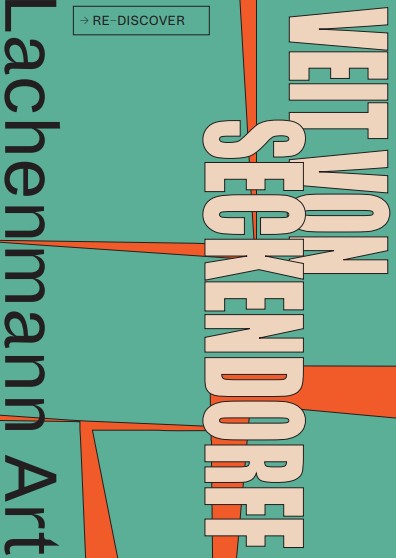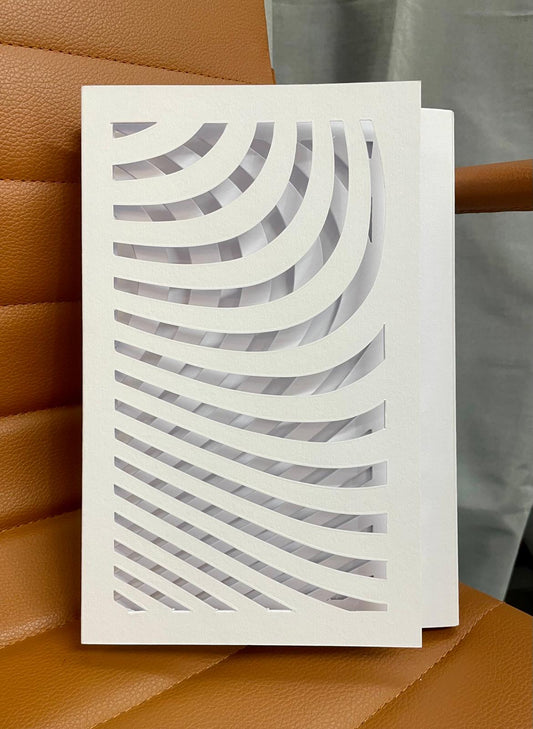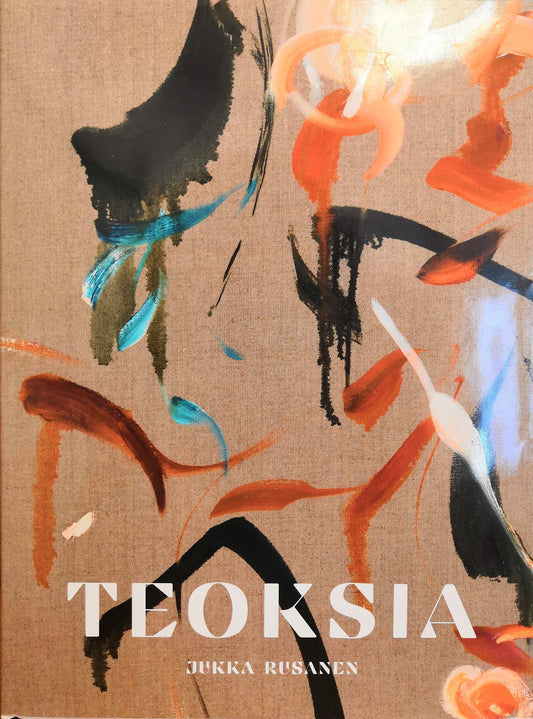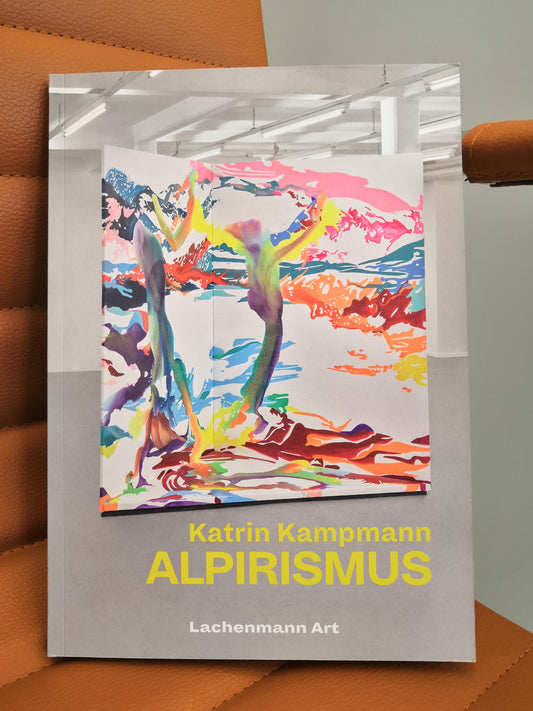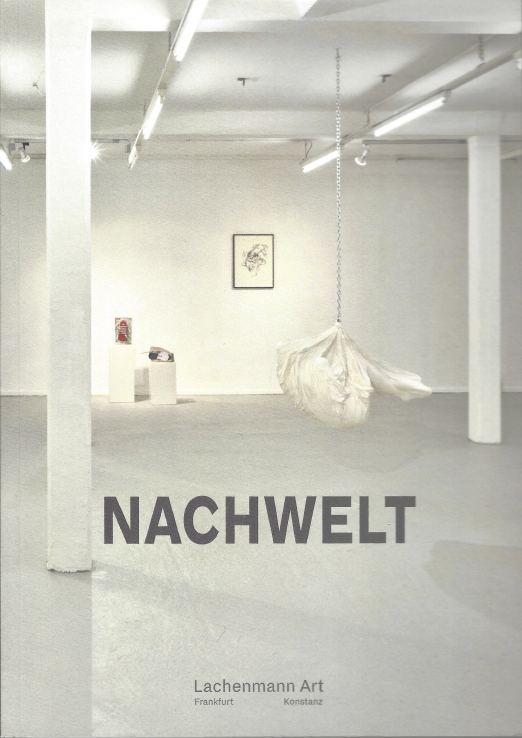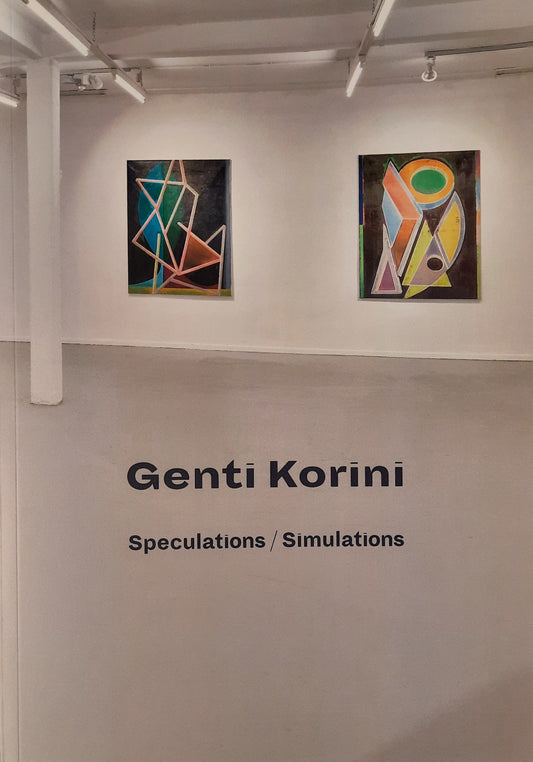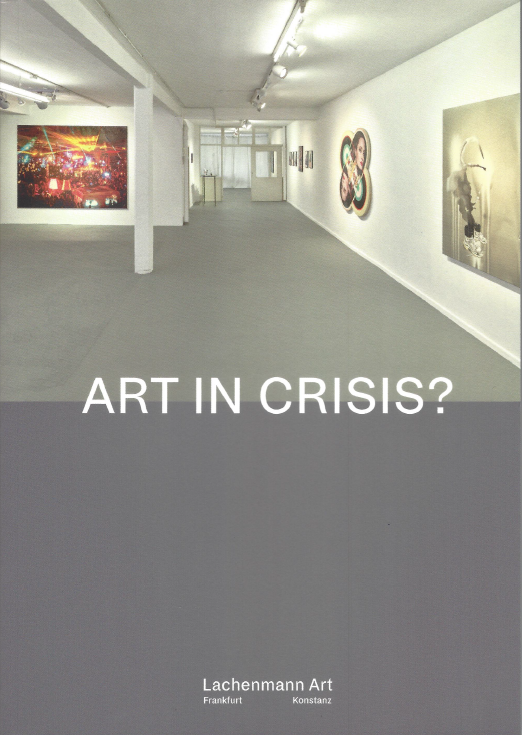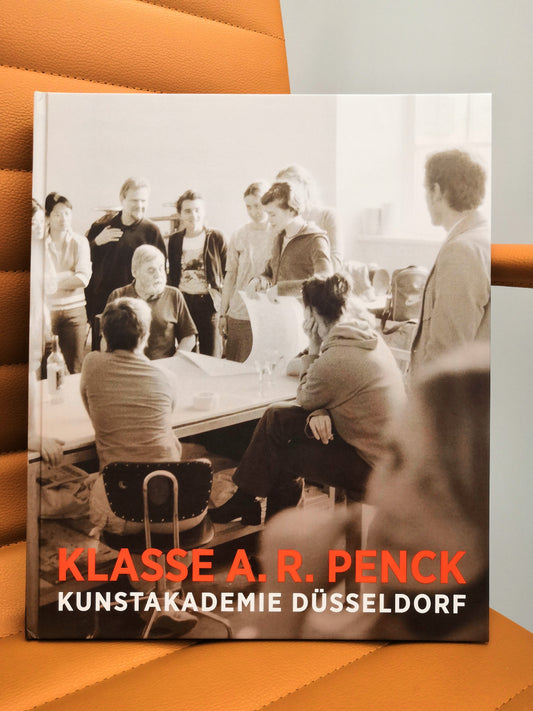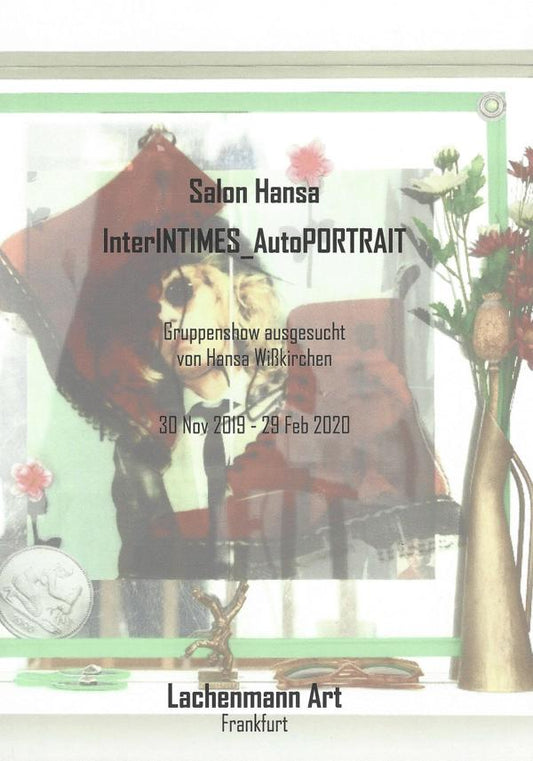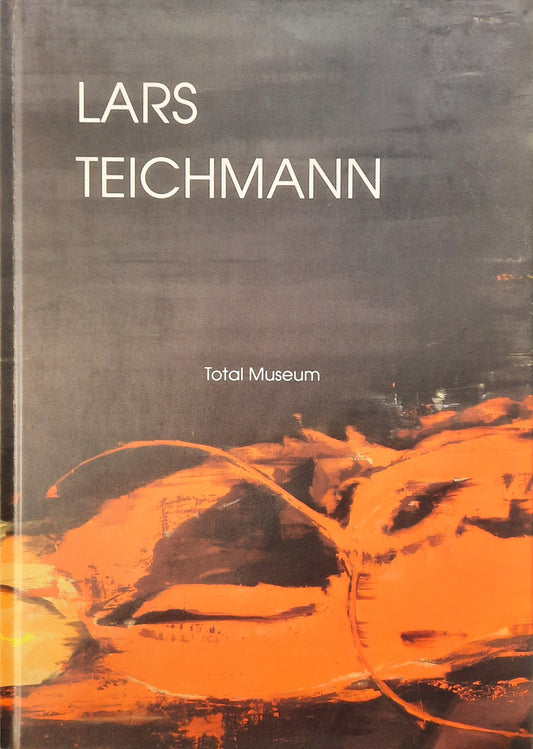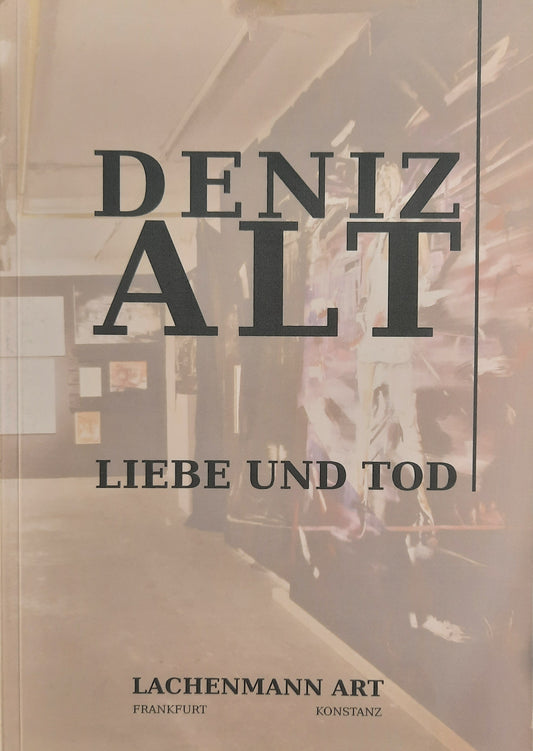›Jardin Japanese‹ 19/03/2022—18/05/2022
›Jardin Japanese‹ 19/03/2022—18/05/2022
Constance 19/03/2022—18/05/2022
The paintings by Berlin-based artist Lars Teichmann invite us to take a walk through a new world of images and take us into an enchanting and at the same time expressive environment with the theme of the geisha. Pastel-colored surfaces nestle against contoured black outlines, figures personify themselves through a color contrast to the monochrome background and, in their larger-than-life appearance, enter into direct communication with the viewer. The white empty spaces of the faces remain undefined moments of the bodies, through which we project representations that seem familiar to our subjective feelings and associations.
Lars Teichmann's reduction of means of representation and composition is mostly based on art historical quotations, which are initially unconsciously inscribed. Lars Teichmann uses Japanese printmaking as a source of inspiration for his new works shown here, thus translating an old tradition into the present and focusing the representations on the essence and character of the appearance. The colored prints of the 18th century are particularly inscribed in this. The lack of light and shadow effects and the renunciation of a classic perspective effect are considered to be significant means of this graphic technique. An illusion of depth is created by the superimposition of individual elements, the execution of which was always limited to small formats and is translated by Lars Teichmann in a contemporary manner into large-format images.
Even though the artist repeatedly draws on moments from the past and thus proves himself to be a connoisseur of art history, he consciously plays with the stimulation of collective memory. The paintings are enriched with themes that awaken memories, associations and subjective thought games in every viewer. For the artist, the "revival of an association" represents an added value for a painting, as the viewer receives a stimulus that continues to work in the body and thus has a high degree of recognition with a wide scope for interpretation.
The series of Japanese works, in which the motif of the geisha is repeatedly found, is particularly interesting in terms of iconographic references and its characteristic style of representation. The geisha as an entertainer, keeper of Japanese tradition, educated woman of grace and connoisseur of the arts is a well-known theme here. What is particularly fascinating for the artist is that Japanese culture also found its way into Western culture in the early 20th century and many of the Asian subjects and motifs had already become part of the collective memory. With his works, Lars Teichmann takes us into an examination of a traditional theme, which the artist updates and translates into the contemporary. His works always oscillate between figuration and abstraction, actively challenging the viewer and sensitizing us to our own perception.
Lars Teichmann also uses the Kabuki theatre of the Japanese Edo period as a source of inspiration and thematically incorporates this social experience of singing, dancing and pantomime, with particular interest in the costumes and fairytale-like stage design.
A reduced stage-like staging, the depiction of opulent fabrics - both skilfully legible with just a few brushstrokes - is a recurring element in the artist's work. While the tradition of geisha culture is characterized, among other things, by the heavy make-up of the face, which creates an almost mask-like effect, the motif of the "associative face" is also an absolutely recognizable feature in Lars Teichmann's oeuvre. This impressive approach of a double inscription of the white "empty space" of the faces supports the iconographic readability of the works. He himself describes this expression as an important moment in his work, since each figure clearly conveys mood, attitude and atmosphere even without the meticulous elaboration of the facial features. Like the actors on a stage, the faceless people appear, not only entering into a mysterious communication with the viewer, but also making contact with each other across the exhibition space.
Installation views: Credits Eric Tschernow

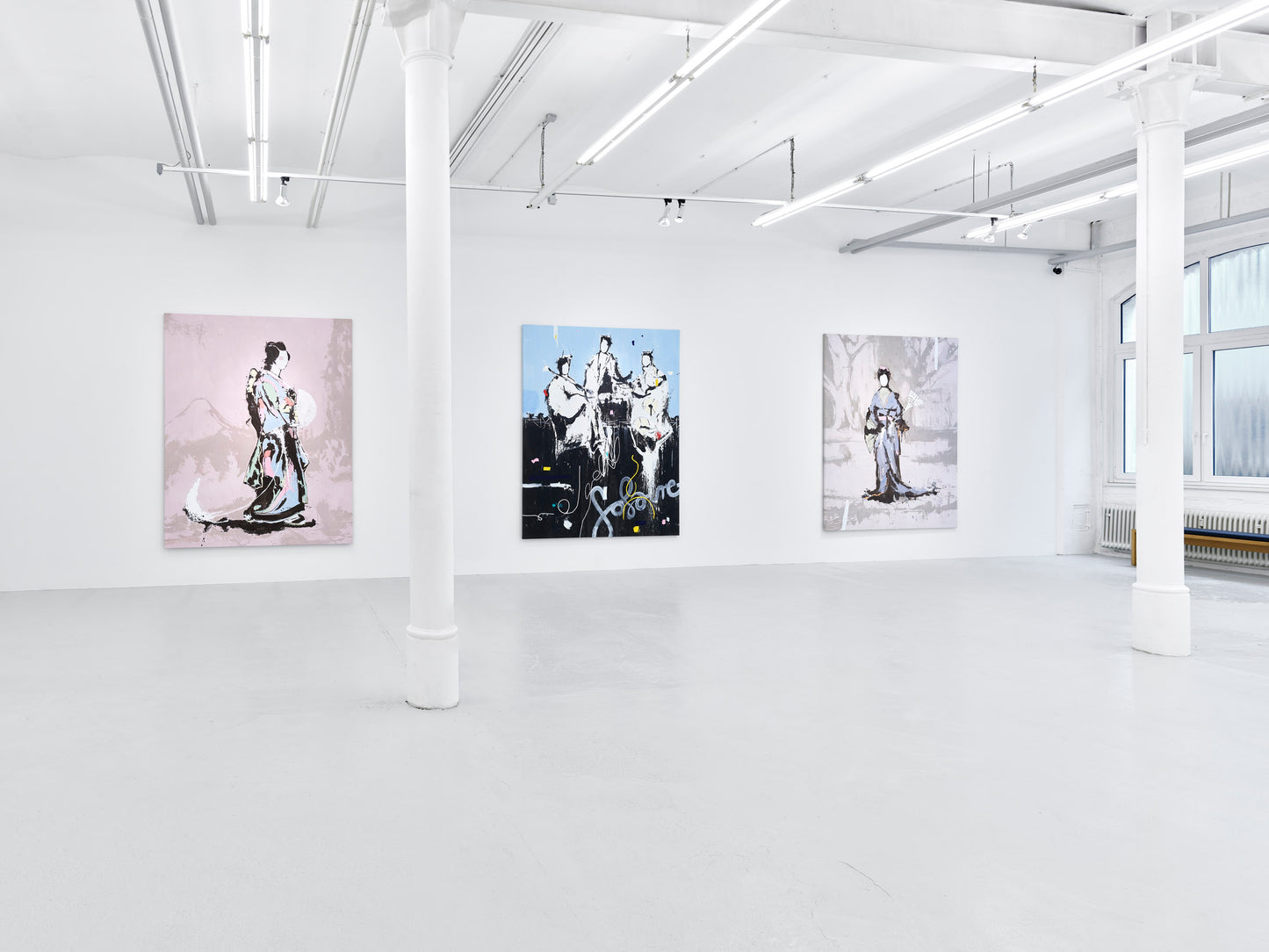

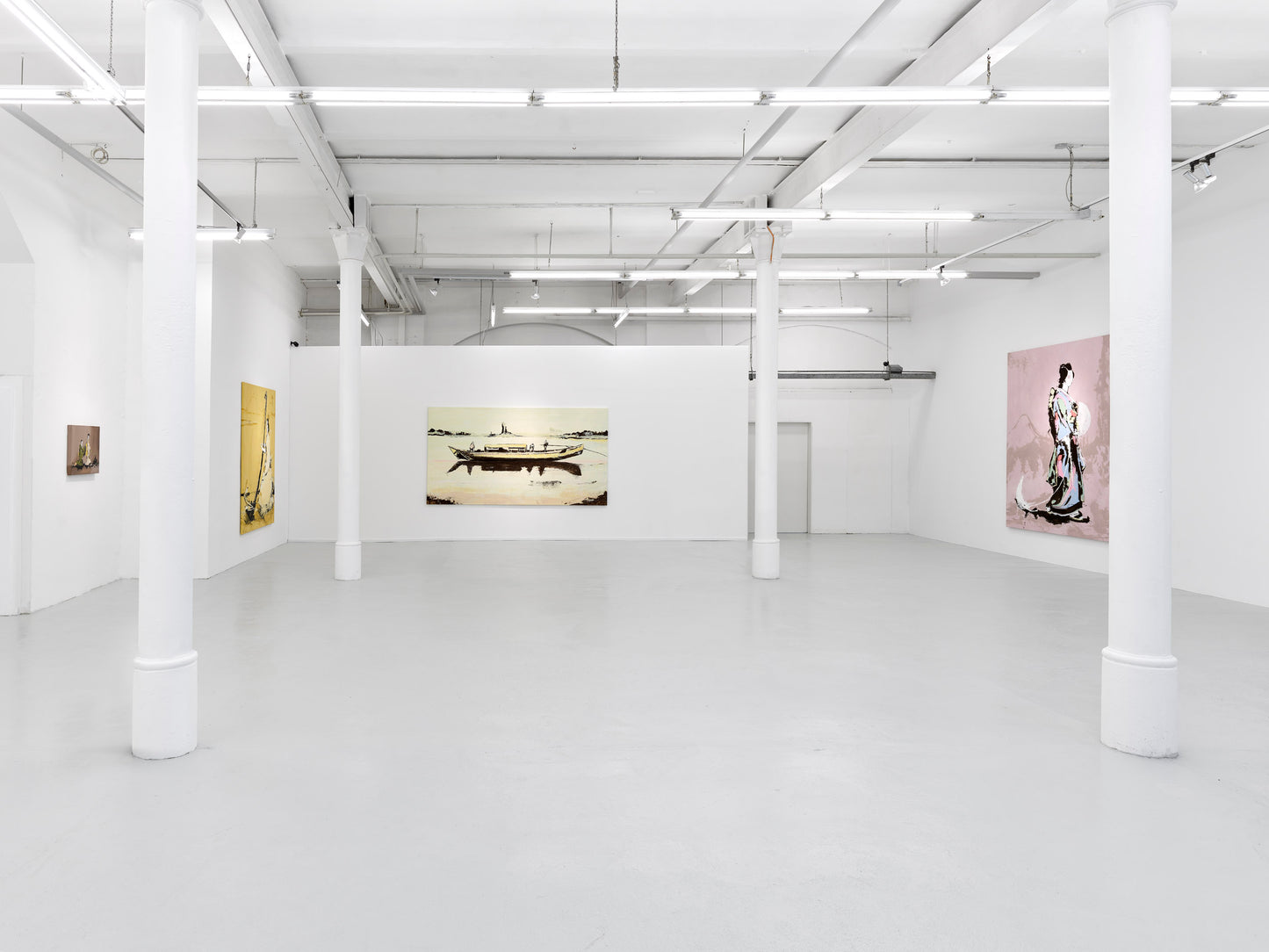
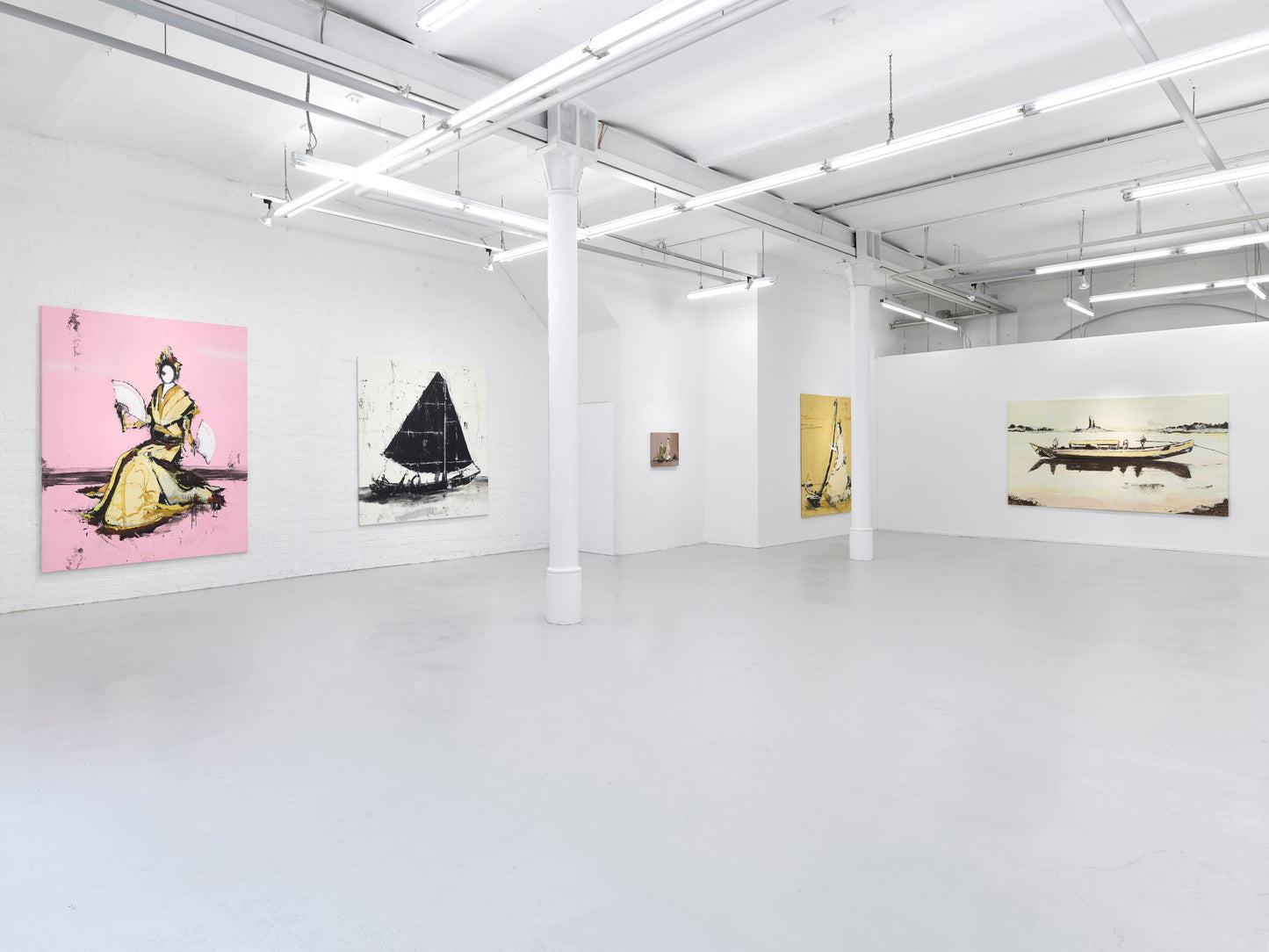
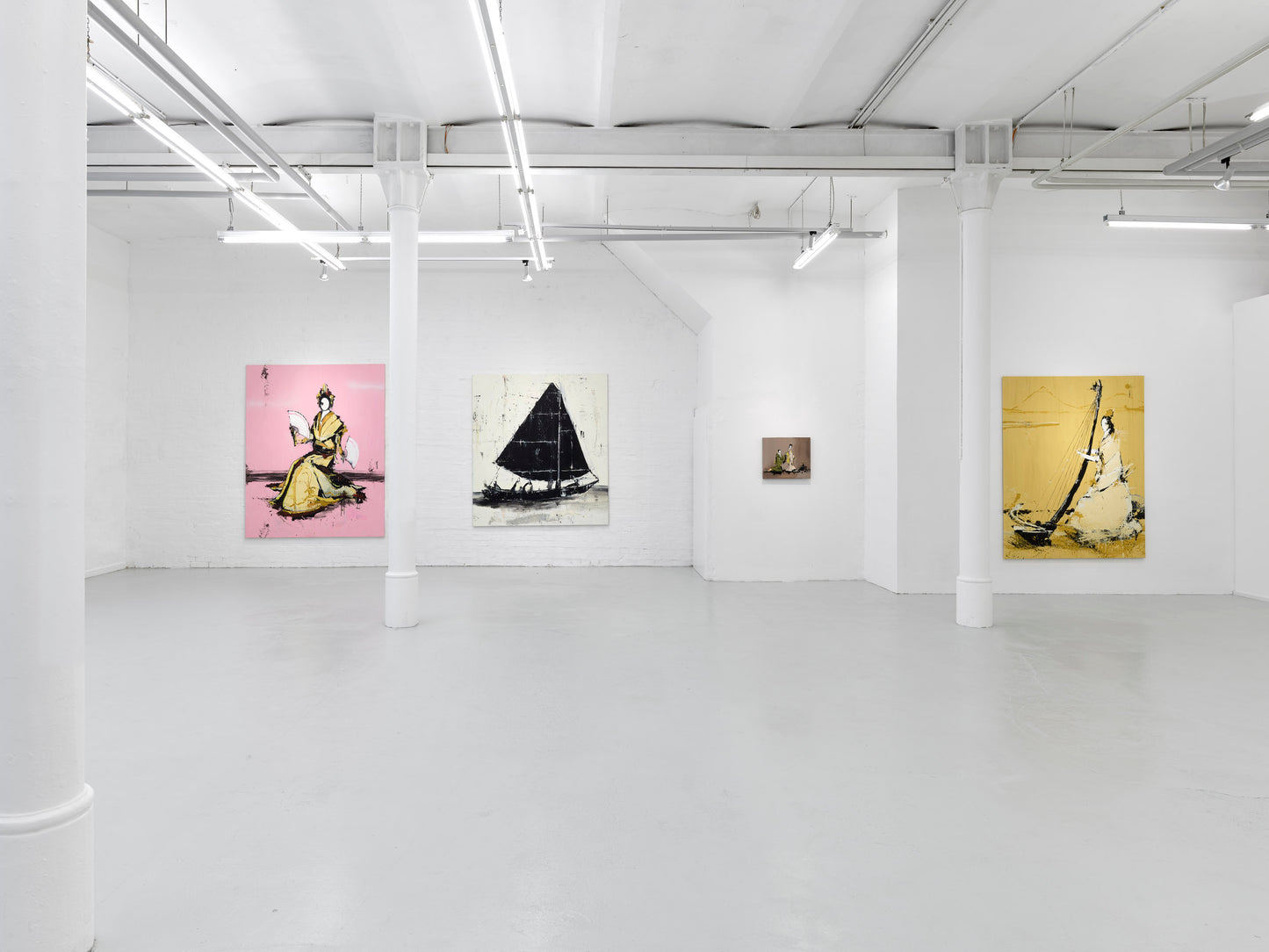

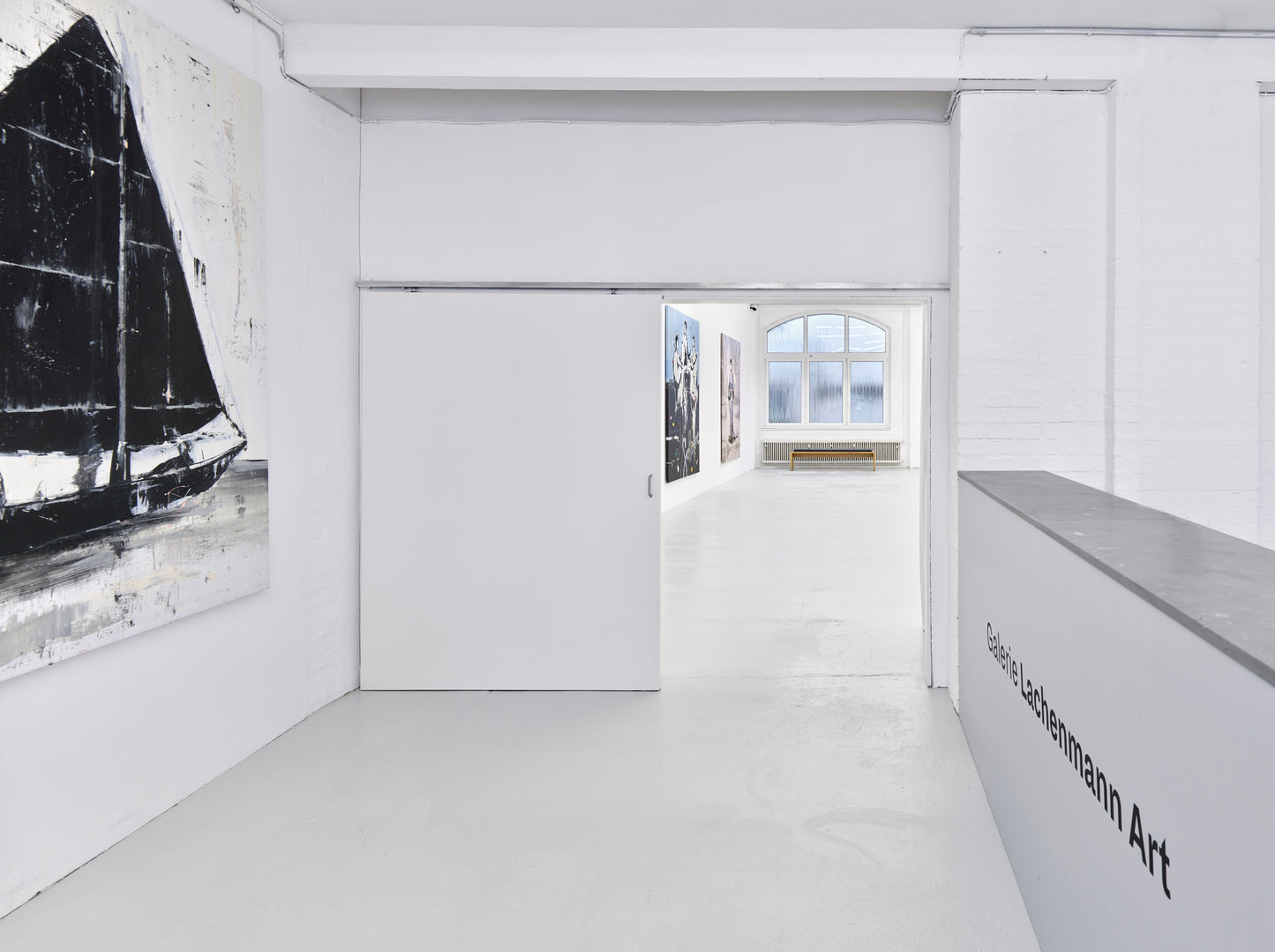
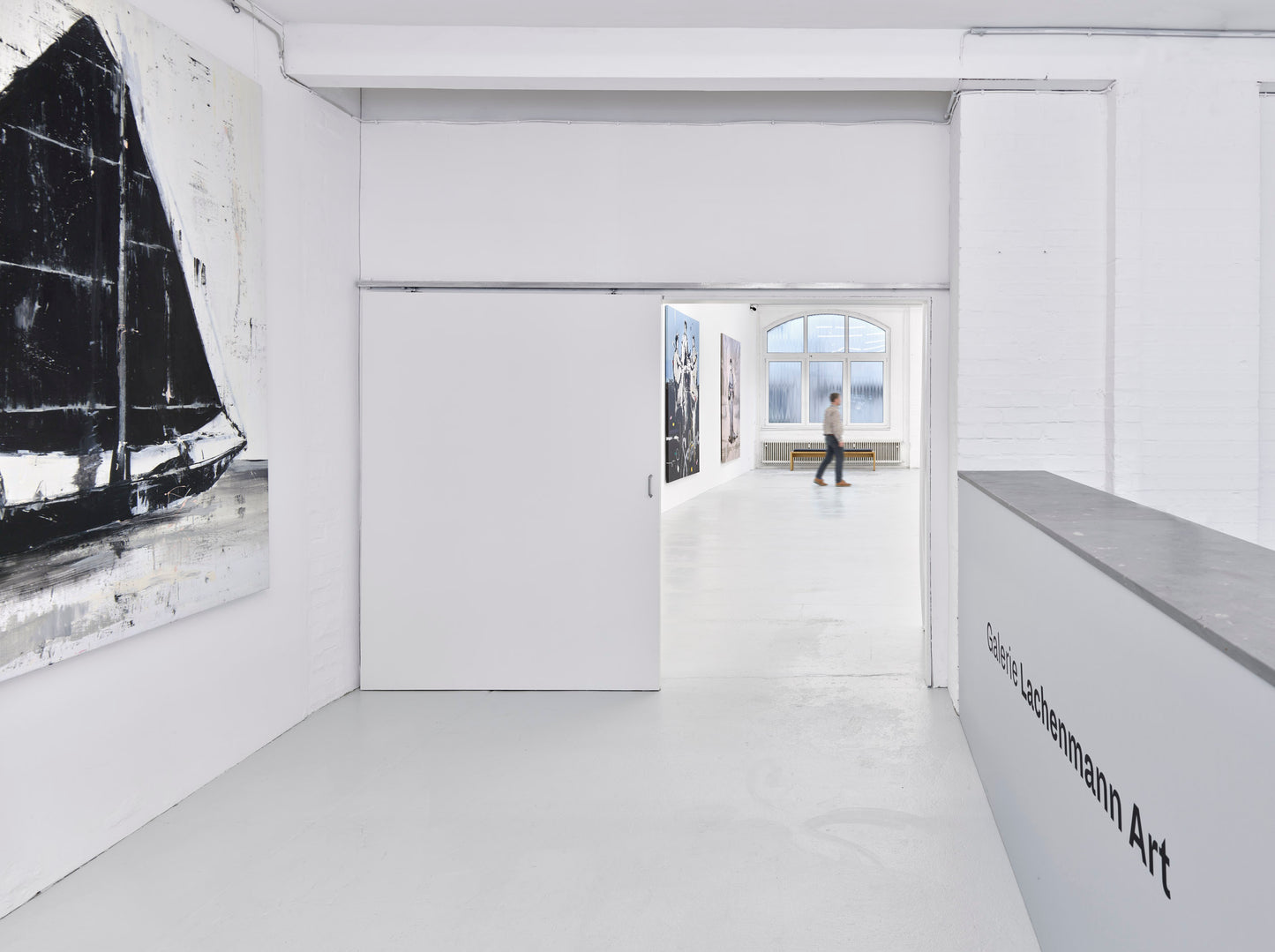
Exhibitions Catalogues
-
Catalogue ›Colours of Utopia‹ Girmachew Getnet | Lachenmann Art
Regular price €15,00Regular priceUnit price perCatalogue ›RE-DISCOVER‹ Veit von Seckendorff | Lachenmann Art
Regular price €15,00Regular priceUnit price perCatalogue ›Interferences‹ | Sandra Schlipkoeter
Regular price €40,00Regular priceUnit price perCatalogue ›Teoksia‹ Jukka Rusanen | Lachenmann Art
Regular price €25,00Regular priceUnit price perCatalogue ›Alpirismus‹ Katrin Kampmann | Lachenmann Art
Regular price €15,00Regular priceUnit price perCatalogue ›NACHWELT‹ Franziska Klotz, Agnes Lammert, Jirka Pfahl, Ronny Szillo | Lachenmann Art
Regular price €15,00Regular priceUnit price perCatalogue ›Speculations / Simulations‹ Genti Korini | Lachenmann Art
Regular price €15,00Regular priceUnit price perCatalogue ›Art in Crisis‹ group exhibition | Lachenmann Art
Regular price €15,00Regular priceUnit price perCatalogue ›Class AR Penck‹ | Kettler Verlag
Regular price €38,00Regular priceUnit price perCatalog ›Salon Hansa: InterINTIMES_AutoPORTRAIT‹ | Lachenmann Art
Regular price €15,00Regular priceUnit price perCatalogue ›Total Museum‹ Lars Teichmann | Lachenmann Art
Regular price €24,00Regular priceUnit price perCatalogue ›Love and Death‹ Deniz Alt | Lachenmann Art
Regular price €15,00Regular priceUnit price perDo you have any questions? Write to us!
- Choosing a selection results in a full page refresh.
- Opens in a new window.
